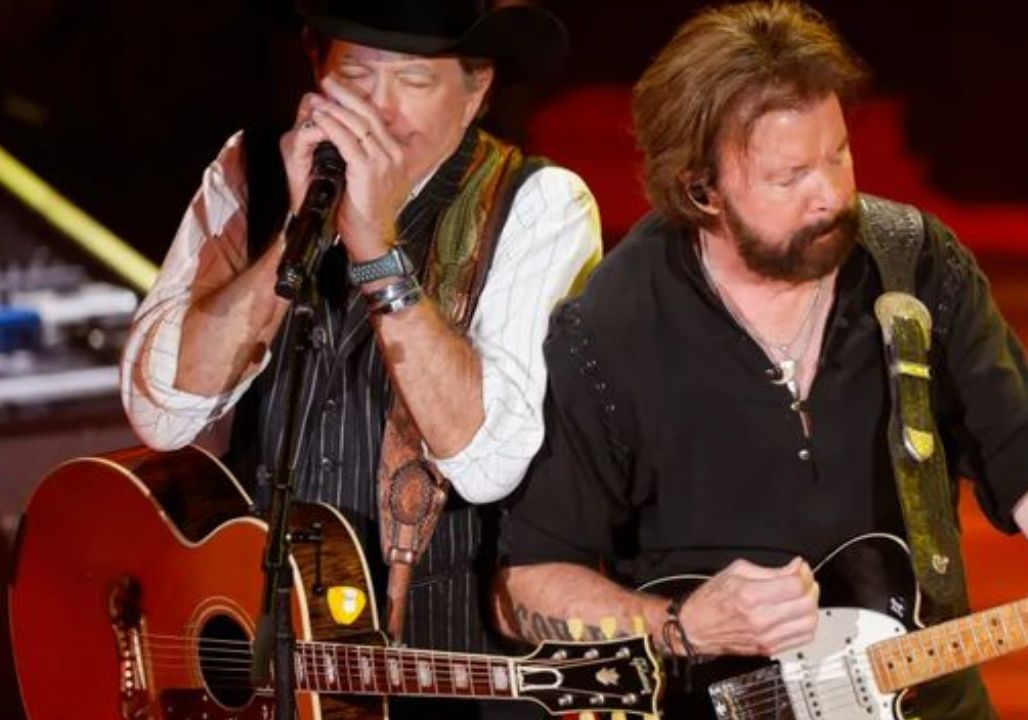Introduction:
The annals of country music are replete with songs that capture the spirit of a generation, yet few resonate with the enduring vibrancy and cross-generational appeal of Brooks & Dunn’s “Boot Scootin’ Boogie”. Released in 1991 as the fourth single from their groundbreaking debut album Brand New Man, this infectious anthem transcended the traditional boundaries of the genre, injecting a shot of pure, unadulterated energy into the cultural landscape. More than just a catchy tune, “Boot Scootin’ Boogie” became a phenomenon, a seismic event that not only solidified Brooks & Dunn’s position as titans of contemporary country but also sparked a nationwide line-dancing craze that swept through honky-tonks and beyond.
To truly appreciate the significance of “Boot Scootin’ Boogie,” one must consider the musical climate from which it emerged. The early 1990s witnessed a burgeoning interest in a more contemporary, arena-ready sound within country music. While traditional elements remained vital, artists were increasingly experimenting with rock influences and more dynamic arrangements. It was within this fertile ground that the duo of Kix Brooks and Ronnie Dunn, two individually successful songwriters who were serendipitously paired by their shared manager, burst onto the scene. Their chemistry was palpable, a synergistic blend of Brooks’s energetic stage presence and Dunn’s powerhouse vocals, complemented by a songwriting prowess that consistently delivered both heartfelt ballads and high-octane barnburners.
“Boot Scootin’ Boogie” perfectly encapsulates this dynamic. The song’s driving rhythm, propelled by a prominent bassline and a relentless, almost rock-infused drumbeat, immediately commands attention. The fiddle, an iconic instrument in country music, takes center stage with a melody that is both instantly recognizable and utterly irresistible. This instrumental foundation provides the perfect canvas for Dunn’s distinctive vocals, which deliver the lyrics with a confident swagger and an undeniable sense of fun. The narrative itself is simple yet universally relatable: the irresistible urge to hit the dance floor and lose oneself in the communal joy of music and movement. The imagery evoked – the neon lights of the bar, the sawdust on the floor, the rhythmic stomp of boots – paints a vivid picture of a classic honky-tonk experience.
However, the success of “Boot Scootin’ Boogie” extends far beyond its musical components. The song arrived at a moment when line dancing was experiencing a resurgence in popularity. Its straightforward structure and infectious beat made it an ideal soundtrack for this social dance phenomenon. Suddenly, dance floors across the nation, from rural watering holes to urban nightclubs, were filled with people of all ages and backgrounds moving in synchronized steps. “Boot Scootin’ Boogie” became the unofficial anthem of this movement, further amplifying its reach and solidifying its place in popular culture.
The impact of “Boot Scootin’ Boogie” on Brooks & Dunn’s career cannot be overstated. It propelled their debut album to multi-platinum status and earned them numerous accolades, including a Grammy Award for Best Country Performance by a Duo or Group with Vocal. More importantly, it established their signature sound – a potent blend of traditional country instrumentation with a contemporary rock edge – that would define their immensely successful career for decades to come. The song’s enduring popularity is a testament to its timeless appeal, its ability to evoke a sense of carefree joy and communal spirit that transcends trends and generations. Even today, “Boot Scootin’ Boogie” remains a staple in country music playlists and a guaranteed crowd-pleaser, a vibrant reminder of a moment when a simple song about dancing ignited a national sensation and cemented Brooks & Dunn’s legacy as true innovators and icons of the genre. It is a song that continues to invite everyone, regardless of their background or experience, to kick up their heels and join the timeless celebration of music and movement.

